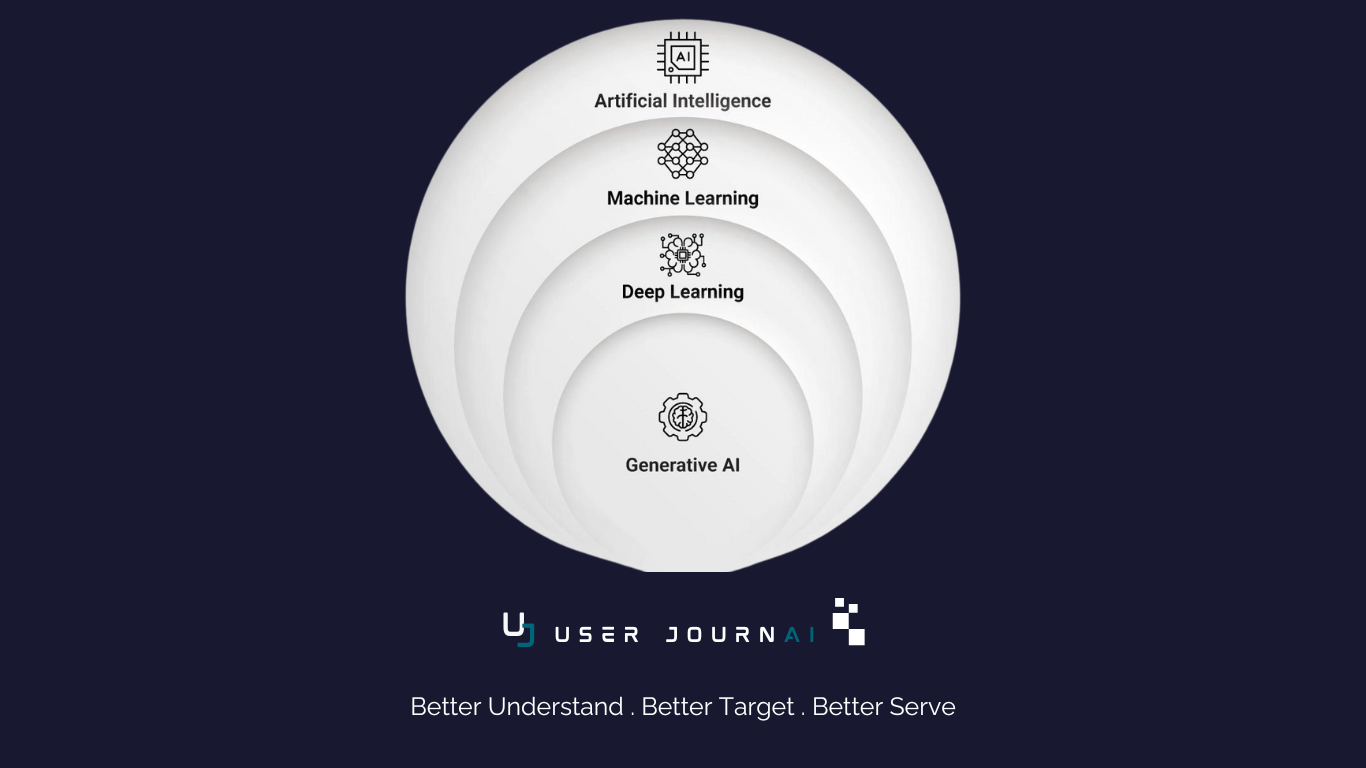Why is generative AI a radical game changer?
Not a presentation without the word AI, not a LinkedIn post without a reference to AI, not a trade show without a flourish of revolutionary solutions.
And yet, when you dig a little deeper, you quickly realize that few people have really grasped the difference between AI and generative AI.
And, as is often the case in our wonderful digital world, we hear everything and anything!

For us, as contributors to our customers' businesses, generative AI is THE revolution to seize.
Here's a quick recap to help you better understand what we're really talking about.
What is Artificial Intelligence (AI)?
AI is broadly defined as the ability of machines to imitate human behavior. It encompasses a wide range of techniques and approaches aimed at enabling machines to perceive, reason, learn and make decisions. AI can be based on rules, statistics or machine-learning algorithms.
Virtual assistants, for example: AI-powered virtual assistants, such as Siri, Google Assistant and Alexa, provide voice interaction and assistance to users. And we'll agree that this remains rather limited!
What is Machine Learning (ML)?
The term "ML" focuses on machines that learn from data without the need for explicit programming. Machine learning algorithms rely on statistical techniques to automatically detect patterns and make predictions or decisions based on the historical data on which they have been trained. The term was coined to emphasize the importance of learning from data, and the ability of machines to improve their performance through exposure to relevant data.
For example, recommendation engines: ML algorithms are commonly used in recommendation systems to provide personalized recommendations to users. These systems learn user preferences and behavior from historical data to suggest relevant products, movies, music or content. Widely used, and have been for a very long time. Who remembers the launch of Last.fm in 2002?
What is Deep Learning (DL)?
DL is defined as a machine learning technique that teaches computers to learn from human-inspired data.
DL uses multi-layered deep neural networks to learn hierarchical representations of data. DL can handle complex tasks and large-scale data sets more efficiently. DL has enjoyed considerable success in a variety of fields, including computer vision, natural language processing and speech recognition.
Facial recognition, for example, involves training neural networks to detect and identify human faces, enabling applications such as biometric authentication, surveillance systems and personalized user experiences.
What is generative AI (GenAI)?
Generative AI, a branch of artificial intelligence and a subset of deep learning, focuses on the creation of models capable of generating new content that resembles existing data.
These models aim to generate content indistinguishable from what could be created by humans. GenAI can create images, text, videos and all kinds of media in response to a request (a prompt).
The use of GenAI makes it possible to automate a large number of repetitive, low-value tasks.
In the world of marketing, this opens up a new horizon in terms of its ability to significantly improve the customer experience.

Generative AI is a veritable revolution in business processes, at every level and in every field. There's no need to fear it, but to embrace it as quickly as possible.
In the same way that digital technology has revolutionized business and power relations over the past 25 years, GenAI is undoubtedly the game changer of the next 10 years.
Companies that fail to embrace it will suffer, and much more quickly than during the e-commerce wave.
Want to find out more? Contact us!
